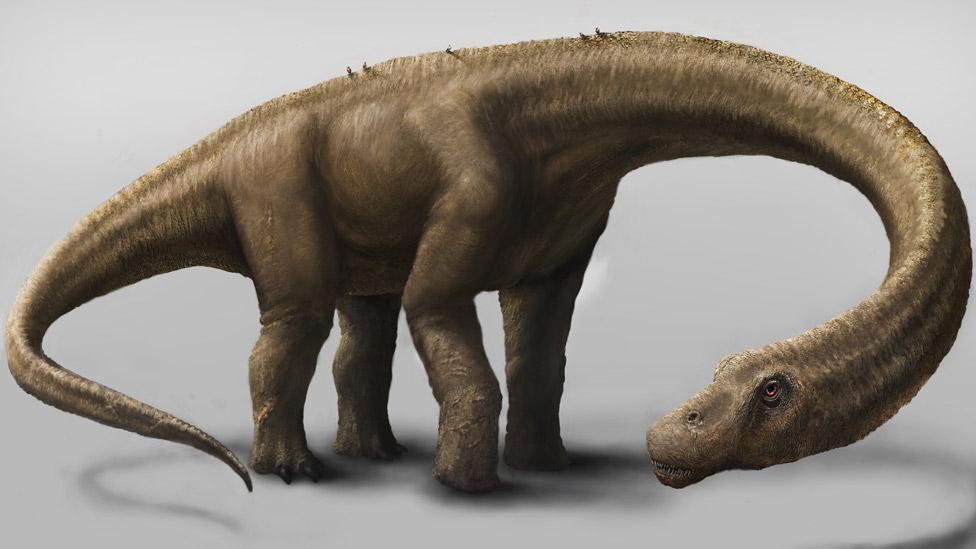London's 'Sophie' Stegosaurus gives up body weight
- Published
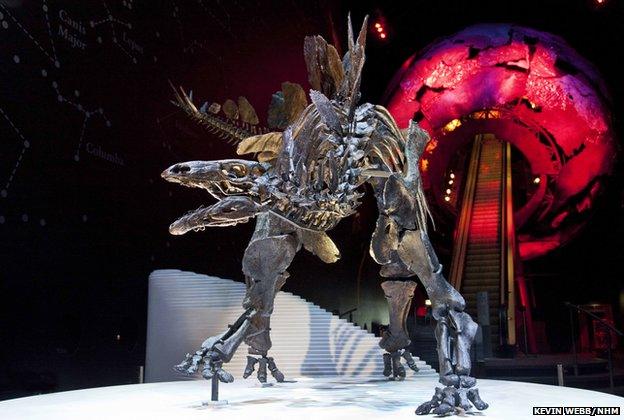
The Natural History Museum's Stegosaurus is 80% complete
Scientists have worked out the body mass of the world's most complete Stegosaurus.
The animal is one of the instantly recognisable dinosaurs thanks to a row of sharp bony plates along its spine.
London's Natural History Museum recently acquired a specimen with 80% of its skeleton intact, external, and finds its weight in life to have been about 1.6 tonnes.
This would have made it similar in size to a small rhino.
But then the specimen - nicknamed "Sophie" - may have been aged just six or seven when she died. Had she survived into adulthood, the beast would have been considerably bigger.
Understanding the mass of an animal is a key data point for unlocking other pieces of information.
Charlotte Brassey: "Her bones tell us she hadn't stopped growing when she died"
Dr Charlotte Brassey is a palaeontologist at the NHM and is the lead author on a paper in Biology Letters, external that details Sophie's weight.
The researcher told BBC News: "If we want to estimate how fast an animal runs, you need body mass; if you want to say something about their metabolism, you need to know their body mass.
"So, yes, we're really glad that we've been able to get hold of this very early on, and now what I'm looking to do is begin to strap muscles on to our computer models so that we can get her walking to say something about locomotion."
Watch Sophie's skeleton being put together in 20 seconds
The 150-million-year-old Stegosaurus stenops specimen was bought for the London collection in 2013, and in December 2014 was positioned at one of the main entrances to the famous museum.
But before Sophie went on display, the NHM's scientists scanned all 360 bones. This work has been instrumental in determining the animal's bulk.
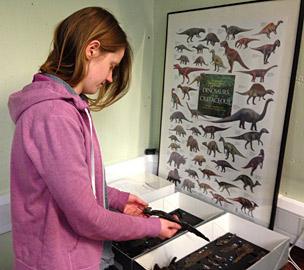
Charlotte Brassey handles parts of Sophie's skull
Traditionally, researchers estimate body mass in animals from the circumference of the femur (thigh bone) and humerus (upper arm). This relationship is well established in modern species and is particularly useful in the case of extinct creatures for which few bones may be preserved.
"But Sophie is exceptional in being mostly complete," said Dr Brassey. "I have spent the last year digitising her whole skeleton, creating 3D models. We can import these into a Computer Aided Design (CAD) package, like those engineers would use, and then just wrap very simple shapes around her body outline, and use that whole volume to predict a body mass."
This produces an estimate that agrees well with the traditional method, taking into account Sophie's relatively juvenile status at death. The Smithsonian museum in Washington DC has an adult specimen that would have tipped the scales at over three tonnes.
The NHM team has a major investigation under way into Sophie, and the group expects to publish a raft of discoveries in the coming years.
One key question of course concerns the function of those bony plates. All but one of Sophie's is preserved.
Some scientists speculate that they may have been a useful defensive weapon. Others wonder if they could have acted like a kind of radiator system, preventing the animal from getting too hot.
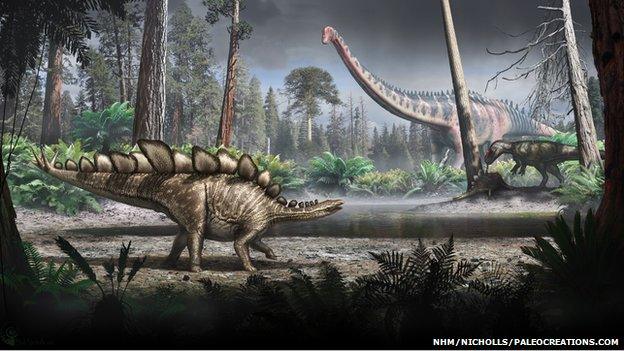
Stegosaurus is one of the most recognisable of the dinosaurs
Jonathan.Amos-INTERNET@bbc.co.uk and follow me on Twitter: @BBCAmos, external
- Published29 January 2015
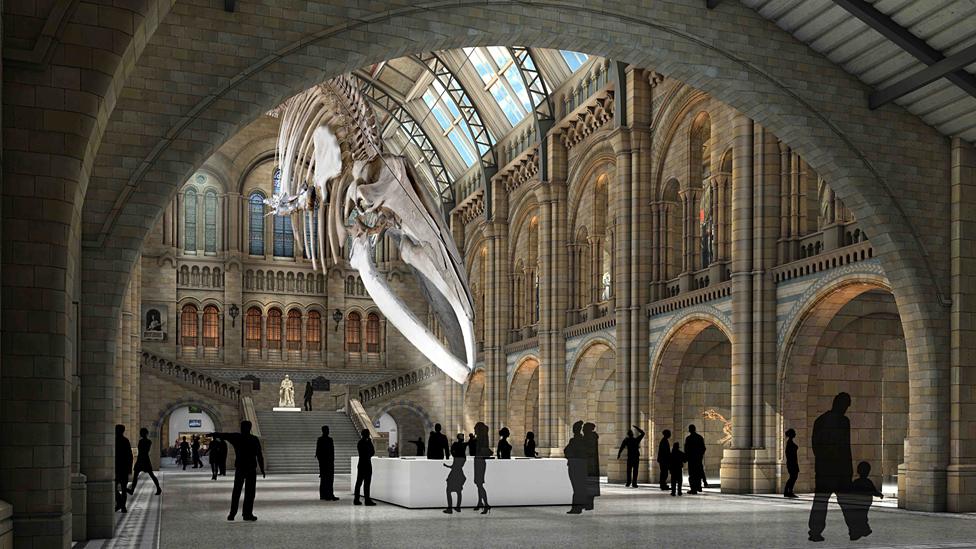
- Published10 January 2015

- Published3 December 2014

- Published4 September 2014
